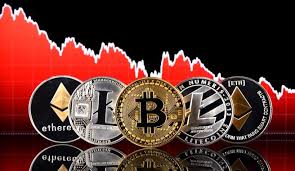
Comprehensive Crypto Trading Asset List
In the ever-evolving world of cryptocurrency trading, having a comprehensive and up-to-date Crypto Trading Asset List is essential for both novice and experienced traders. To navigate the volatile market effectively, one must understand the various assets available, including their characteristics, use cases, and potential for future growth. Here, we present an extensive overview of the most significant crypto assets, along with insights into trading strategies and considerations. For more details on crypto assets, Crypto Trading Asset List click here.
1. Bitcoin (BTC)
Bitcoin, often referred to as digital gold, is the first and most widely recognized cryptocurrency. Launched in 2009 by an anonymous entity known as Satoshi Nakamoto, Bitcoin operates on decentralized blockchain technology. The asset is highly coveted for its scarcity, as there will only ever be 21 million BTC in existence.
Trading strategies involving Bitcoin can include:
- HODLing: Long-term holding of Bitcoin to benefit from price appreciation.
- Swing Trading: Taking advantage of price swings in the short to medium term.
- Day Trading: Buying and selling Bitcoin within a single trading day to capitalize on volatility.
2. Ethereum (ETH)
Ethereum is unique not only because it functions as a cryptocurrency but also because it serves as a platform for decentralized applications (dApps). Launched in 2015, Ethereum introduces the concept of smart contracts, which automate transactions directly within the blockchain. This capability has led to the creation of various tokens and projects, establishing Ethereum as the second-largest cryptocurrency by market capitalization.
Popular trading strategies for Ethereum include:
- Investing in ICOs (Initial Coin Offerings) of tokens built on the Ethereum platform.
- Participating in staking opportunities to earn rewards on holdings.
- Engaging in arbitrage trading across different exchanges.

3. Binance Coin (BNB)
Initially created as a utility token for the Binance exchange, Binance Coin has evolved significantly over the years. It can be used for trading fee discounts, transaction on Binance Smart Chain, and much more. As Binance continues to expand its services, BNB’s use case and value have grown, making it a strong asset for trading.
Traders often utilize BNB in various ways:
- Using BNB to pay for trading fees on Binance to receive discounts.
- Trading BNB with different pairs to capitalize on market fluctuations.
- Taking advantage of BNB’s utility within DeFi protocols on the Binance Smart Chain.
4. Cardano (ADA)
Cardano distinguishes itself through its scientific and research-driven approach to blockchain development. Founded by one of Ethereum’s co-founders, Charles Hoskinson, Cardano aims to provide a balanced and sustainable ecosystem for cryptocurrencies. The platform focuses on scalability, interoperability, and sustainability, positioning itself as a robust competitor to Ethereum.
Common trading practices around Cardano include:
- Speculating on price movements based on technological developments and partnerships.
- Engaging in governance opportunities through ADA staking.
- Combining Cardano trading with fundamental analysis of its ongoing improvements and community engagement.
5. Solana (SOL)
Solana has emerged as one of the fastest blockchains, providing high throughput and low transaction costs. It has gained considerable attention due to its speed and scalability, making it an attractive platform for developers and businesses alike. Solana’s ecosystem is rapidly expanding, with numerous projects building on its foundation.
Traders focusing on Solana might implement strategies such as:

- Investing in new projects or tokens launched within the Solana ecosystem.
- Monitoring network performance to capitalize on the volatility associated with technological upgrades.
- Utilizing tools and analytics specific to Solana for informed trading decisions.
6. Ripple (XRP)
Ripple aims to revolutionize the banking and finance sector by providing a real-time gross settlement system. RippleNet uses the native cryptocurrency XRP for fast and inexpensive cross-border payments. Despite regulatory challenges, XRP continues to maintain a dedicated following and utilization within financial institutions.
Some common trading strategies with XRP include:
- Monitoring legal developments and news concerning Ripple Labs and XRP’s regulatory status.
- Engaging in speculation based on partnerships with banks and payment processors.
- Utilizing XRP for trading against fiat currencies to exploit price differences.
7. Polkadot (DOT)
Polkadot promotes interoperability between various blockchains, allowing them to communicate and share data seamlessly. Founded by Ethereum co-founder Dr. Gavin Wood, Polkadot utilizes a unique multichain framework that enhances scalability and lowers costs. Its innovative approach has led to growing interest from investors and developers alike.
Trading strategies associated with Polkadot include:
- Investing in parachains through auctions to gain exposure to new projects.
- Trading DOT against major cryptocurrencies to capture market movements.
- Participating in governance proposals for Polkadot network improvements.
Conclusion
This Crypto Trading Asset List provides a snapshot of some of the most significant cryptocurrencies in today’s market. Successful trading requires a deep understanding of each asset’s fundamentals, market dynamics, and technological advancements. As you explore the world of crypto trading, consider developing a well-rounded strategy that takes into account both short-term market movements and long-term investment goals. Stay informed, remain cautious, and use this list as a foundational resource to guide your trading journey.
